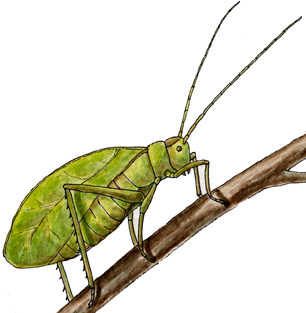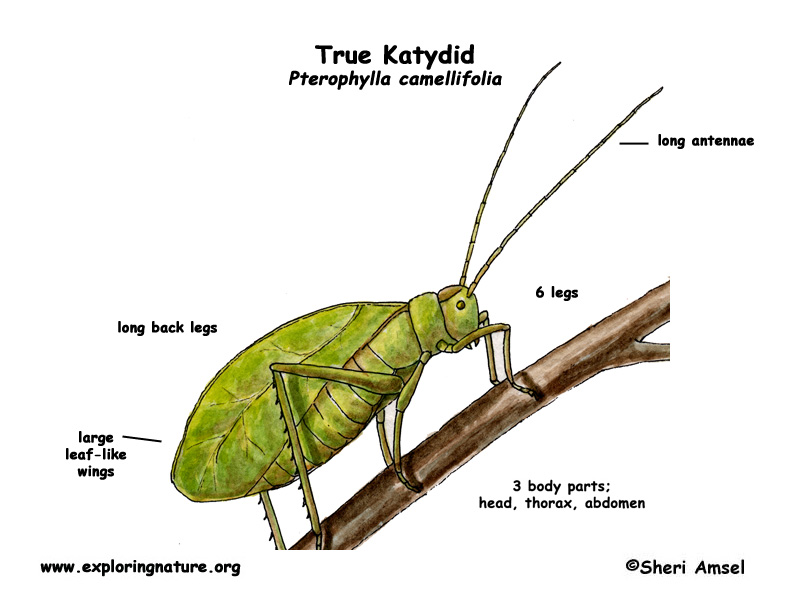

They are found in the eastern half of the United States.
True katydid live in hardwood forests, yards, roadsides and parks.
They are green with long back legs, large leaf-like wings and long antennae. On their front legs are small sound pads, known as tympana, which is how they hear. The female katydid uses them to locate the males by their mating songs.
They rub one forewing that has an area like a file over a scraper area on the other forewing to make their, “katydid” mating call on summer nights.
They eat leaves, especially from oak trees.
Females glue eggs underneath leaves of the trees they eat.
Kingdom: Animalia
Phylum: Arthropoda
Class: Insecta
Order: Hymenoptera
Suborder: Apocrita
Family: Apidae
Genus: Apis
Species: A. mellifera
When you research information you must cite the reference. Citing for websites is different from citing from books, magazines and periodicals. The style of citing shown here is from the MLA Style Citations (Modern Language Association).
When citing a WEBSITE the general format is as follows.
Author Last Name, First Name(s). "Title: Subtitle of Part of Web Page, if appropriate." Title: Subtitle: Section of Page if appropriate. Sponsoring/Publishing Agency, If Given. Additional significant descriptive information. Date of Electronic Publication or other Date, such as Last Updated. Day Month Year of access < URL >.
Amsel, Sheri. "Katydid (True)" Exploring Nature Educational Resource ©2005-2024. December 16, 2024
< http://www.exploringnature.org/db/view/Katydid-True >

